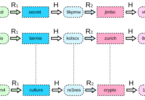CryptoDrop – Technique to Stop Ransomware
Hackers tend to utilise ramsomware to encrypt the computer files, demanding money in exchange for deliverance of those contents. This has become an explosion global issue with insufficient solution; though a team of University of Florida researchers state that it has created a technique of stopping it dead in its tracks. The solution is said to be not in keeping it out of a computer but instead in confronting it once it comes up and counter-intuitively, essentially enabling it to lock up some of the files before clamping down on it.
Nolen Scaife, a UF doctoral student and founding associate of UF’s Florida Institute for Cybersecurity Research, stated that their CryptoDrop system seems to be more of an early warning system. CryptoDrop does not prevent the ransomware from starting, but prevents it from completing its task so that you tend to lose only some of the images or a couple of documents instead of everything that is on the hard drive.
It seems to relieve you of the burden of having to pay the ransom.Scaife is part of a team which has come up with the solution for ramsomware and is called `CryptoDrop’. CryptoDrop tends to work flawlessly with antivirus software.
CryptoDrop: Solution Better than Traditional Anti-Viruses
Scaife states that these attacks are tailored and unique each time they seem to get installed on a users’ system. Antivirus seems good at preventing things it’s seen before and that is where their solution is better than the traditional anti-viruses. If something which is benign begins to behave maliciously, then what can be done is to take action against that based on what is seen happening to your data.
Hence we can stop for instance, all of the images from being encrypted. Ransomware attacks has become one of the most serious issues in the digital world and the FBI had issued warning in May stating the number of attacks had become double in the past year and anticipates to increase even more speedily this year. It had received over 2,400 complaints last year with estimated losses at $24 billion last year for individuals as well as businesses, from such attacks.
The assailants seem to be typically shadowy figures from other countries prowling on the Dark Web and difficult to locate. The victims comprise of not only individuals but also governments, health care providers, industry, educational institutions as well as financials units.
Easy Way of Monetizing Bad Use of Software
The assailants tend to show up in the form of an email which seems to appear to be coming from some familiar contacts. The recipients tend to click on a link in the email and without being aware releases malware which encrypts their data. This is then followed by a message demanding the ransom, which could be from a few hundred to a few thousand dollars.
An associate professor in UF’s department of computer and information science and engineering at UF as well as a member of the Florida Institute for Cybersecurity Research, Patrick Traynor commented that it is an incredibly easy way of monetizing a bad use of software.
He along with Scaife had worked together in the development of CryptoDrop. Some of the companies have resigned themselves to that certainty and budgeted money to cover ransoms that is usually paid in Bitcoin, which is a digital currency that challenges tracing.







